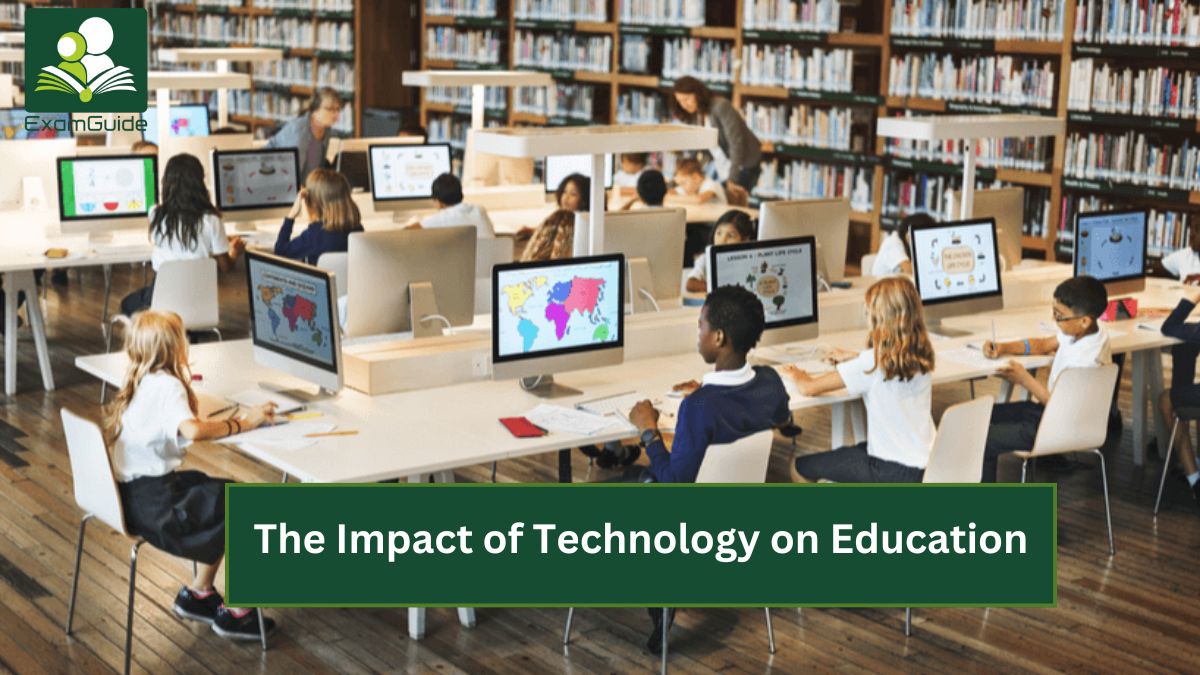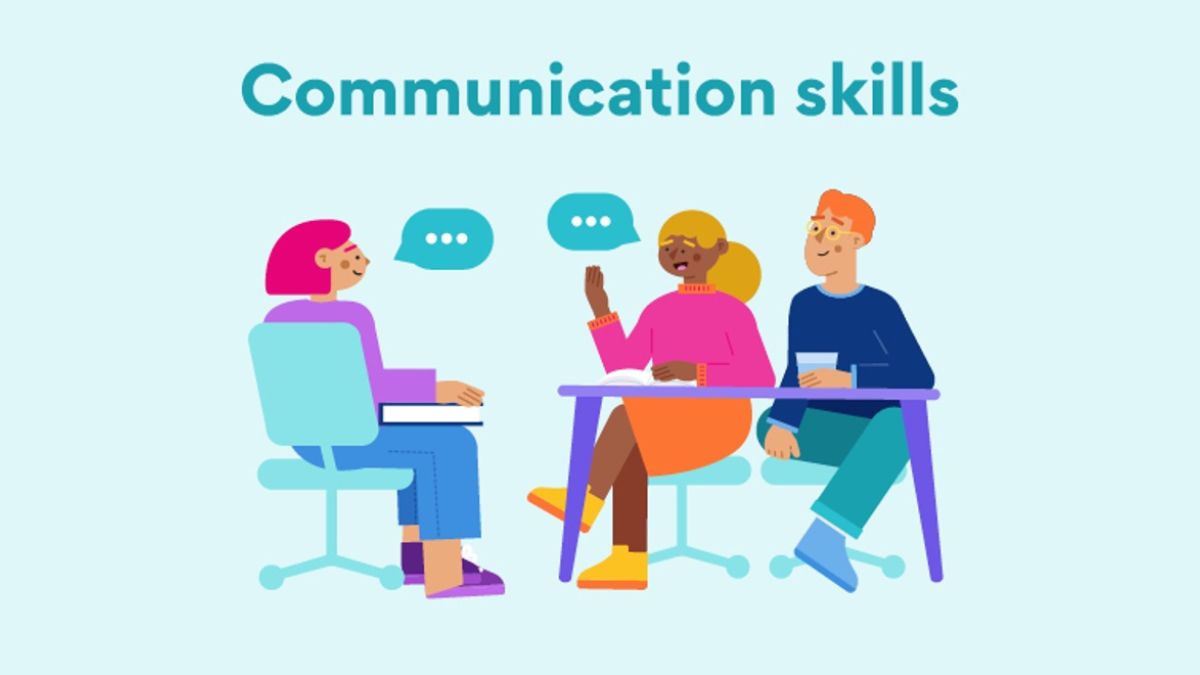
The Impact of Technology on Education
Technology has dramatically transformed various aspects of society, and education is no exception. From digital classrooms to online resources, the integration of technology in education has reshaped how teaching and learning occur.
This article explores the complex impact of technology on education, highlighting both its benefits and challenges.
Table of Content
Benefits of Technology on Education
Challenges of Technology on Education
What are Some Future Trends in Educational Technology?
What are the Benefits of Remote Learning Enabled by Technology?
How Does Technology Support Students With Disabilities?
Does Technology Replace Teachers?
What are Some Examples of Educational Technology Tools?
How can Educators Effectively Integrate Technology into Their Teaching?
Benefits of Technology on Education
1. Enhanced Learning Experience
Interactive Learning Tools: Technology has introduced interactive learning tools such as smartboards, educational apps, and virtual reality (VR). These tools make learning more engaging by providing dynamic content that can illustrate complex concepts more understandably.
For instance, VR can take students on virtual field trips, bringing historical events or scientific phenomena to life.
Access to Diverse Resources: The internet offers a vast array of educational resources, including e-books, online journals, and multimedia content. Students can access up-to-date information and educational materials from anywhere in the world, enriching their learning experience and broadening their knowledge base.
Personalized Learning: Adaptive learning technologies use algorithms to tailor educational content to individual student needs. Platforms like ExamGuide and Coursera provide personalized learning paths based on student’s progress and areas of improvement, allowing for a more customized educational experience.
2. Increased Accessibility
Remote Learning: Online education platforms have made it possible for students to learn from remote locations. During the COVID-19 pandemic, remote learning became essential, highlighting how technology can provide education to students who might otherwise be unable to attend physical classrooms due to geographical or health-related reasons.
Educational Apps and Platforms: Mobile apps and online platforms have made learning more accessible, especially for students in underserved or rural areas. Apps like Duolingo and educational websites provide learning opportunities outside the traditional classroom setting, helping bridge educational gaps.
Assistive Technologies: Technology has also played a crucial role in supporting students with disabilities. Tools like text-to-speech software, screen readers, and speech recognition systems help make education more inclusive and accessible for students with varying needs.
3. Improved Teaching Methods
Digital Resources for Teachers: Educators now have access to a wealth of digital resources to enhance their teaching methods. Tools like Google Classroom, Microsoft Teams, and Zoom enable teachers to create, distribute, and manage instructional content more efficiently.
Collaborative Learning: Technology facilitates collaborative learning by enabling students to work together on projects and assignments online. Platforms like Slack and Trello allow for seamless communication and project management, fostering teamwork and peer learning.
Data-Driven Insights: Educational technology provides data analytics tools that help teachers track student progress and performance. This data can be used to identify learning gaps, tailor instruction, and implement targeted interventions to improve student outcomes.
Challenges of Technology on Education
Digital Gap
While technology has improved access to education for many, it has also highlighted the digital gap between students with access to modern devices and those without.
Inequities in technology access can exacerbate educational disparities and hinder students’ ability to fully participate in digital learning environments.
Distraction and Overuse
The presence of technology in educational settings can sometimes lead to distractions. Social media, games, and other non-educational content can divert students’ attention away from their studies.
Ensuring a balanced approach to technology use is essential to maintain focus and productivity.
Data Privacy and Security
The increased use of technology in education raises concerns about data privacy and security. Schools and educational institutions must implement robust measures to protect student's personal information and ensure compliance with data protection regulations.
Training and Professional Development
Effective integration of technology requires ongoing training and professional development for educators. Teachers need to be equipped with the skills and knowledge to use educational technology effectively and to stay updated with emerging tools and trends.
What are Some Future Trends in Educational Technology?
Artificial Intelligence (AI)
AI is set to further transform education by providing advanced tools for personalized learning, predictive analytics, and automated administrative tasks. AI-driven platforms can offer real-time feedback and support tailored to individual student needs.
Blockchain Technology
Blockchain has the potential to revolutionize record-keeping and credential verification in education. It can provide secure and tamper-proof records of academic achievements and certifications, improving transparency and trust in educational credentials.
Augmented Reality (AR)
AR is expected to enhance learning by overlaying digital information in the real world. This technology can create immersive learning experiences, such as interactive anatomy lessons or historical reenactments, making education more engaging and experiential.
What are the Benefits of Remote Learning Enabled by Technology?
Remote learning allows students to access education from any location, breaking geographical barriers. This was particularly evident during the COVID-19 pandemic when online platforms became essential for continuing education.
Remote learning also provides flexibility, making education accessible to students who might face health or logistical challenges in attending traditional classrooms.
How Does Technology Support Students With Disabilities?
Assistive technologies such as text-to-speech software, screen readers, and speech recognition systems support students with disabilities by making educational content more accessible.
These tools help create an inclusive learning environment that accommodates various needs and abilities.
Does Technology Replace Teachers?
No, technology does not replace teachers. Instead, it serves as a tool that enhances and supports the educational process. Here's how technology complements rather than replaces teachers:
- Augments Teaching: Technology provides resources and tools that teachers can use to enrich their lessons. For example, interactive simulations, educational apps, and multimedia presentations can make complex topics more understandable and engaging.
- Supports Differentiation: With technology, teachers can offer personalized learning experiences tailored to individual students' needs. Tools such as learning management systems (LMS) and adaptive learning software help teachers track progress and adjust instruction accordingly.
- Facilitates Communication: Technology helps teachers communicate more effectively with students and parents. Platforms like online discussion boards, email, and virtual classrooms make it easier to share information, provide feedback, and address concerns.
- Enhances Professional Development: Teachers use technology for ongoing professional development through online courses, webinars, and educational forums. This helps them stay current with teaching strategies and technological advancements.
- Encourages Collaboration: Technology promotes collaboration among students and between teachers. Tools like collaborative document editors and project management apps facilitate group work and teamwork, allowing teachers to guide and support students in a collaborative environment.
- Provides Data and Insights: Technology offers valuable data and analytics on student performance. Teachers can use this information to identify learning gaps, assess the effectiveness of their teaching methods, and make data-driven decisions to improve instruction.
What are Some Examples of Educational Technology Tools?
Here are some examples of educational technology tools that enhance teaching and learning:
- Learning Management Systems (LMS)
- Moodle: An open-source LMS that supports online learning and course management.
- Google Classroom: A free tool that helps teachers create, distribute, and grade assignments.
- Educational Apps and Platforms
- Khan Academy: Offers a wide range of free educational videos and practice exercises in various subjects.
- Duolingo: A language-learning app that gamifies the process of learning new languages.
- ExamGuide: a computer-based testing and learning application (CBT SOFTWARE) specifically designed to help candidates do a comprehensive study and also test their preparedness for Exams.
- Interactive Whiteboards
- SMART Board: A digital whiteboard that allows teachers to display and interact with multimedia content.
- Promethean ActivPanel: An interactive display that enhances classroom interactivity and collaboration.
- Educational Software
- Microsoft Office Suite: Includes tools like Word, Excel, and PowerPoint, commonly used for creating documents, presentations, and data analysis.
- Adobe Creative Cloud: A suite of tools for graphic design, video editing, and other creative tasks.
- Virtual and Augmented Reality
- Google Expeditions: Allows students to take virtual field trips and explore different environments using VR.
- ZSpace: Provides AR/VR experiences for subjects like science and engineering, enabling interactive learning.
- Online Collaboration Tools
- Padlet: An online tool for creating collaborative boards where students and teachers can share ideas and resources.
- Trello: A project management tool that helps with organizing tasks and collaborative projects.
- Assessment and Feedback Tools
- Quizlet: Enables students to study through flashcards and quizzes, and helps teachers create custom study sets.
- Socrative: Allows teachers to create quizzes and polls to assess student understanding in real time.
- Adaptive Learning Platforms
- DreamBox: Provides personalized math instruction based on students' learning needs and progress.
- IXL: Offers personalized practice in various subjects with immediate feedback and progress tracking.
- Video Conferencing Tools
- Zoom: Facilitates virtual classrooms and meetings, enabling remote learning and collaboration.
- Microsoft Teams: Offers video conferencing, chat, and file-sharing features for classroom and group activities.
These tools support various aspects of education, including instruction, collaboration, assessment, and personalized learning, helping to create a more dynamic and effective learning environment.
How can Educators Effectively Integrate Technology into Their Teaching?
Educators can effectively integrate technology into their teaching through the following strategies:
1. Align Technology with Learning Objectives
- Identify Goals: Start by defining clear learning objectives and selecting technology tools that align with these goals. For instance, use interactive simulations to teach complex scientific concepts or educational apps to reinforce language skills.
- Purposeful Integration: Ensure that the technology enhances the learning experience and supports the achievement of educational outcomes rather than serving as a mere novelty.
2. Provide Professional Development
- Training Programs: Participate in workshops, webinars, and training sessions focused on the effective use of educational technology. This helps educators stay current with new tools and best practices.
- Peer Learning: Collaborate with colleagues who are experienced in using technology. Sharing insights and strategies can provide practical guidance and inspiration.
3. Start Small and Scale Gradually
- Pilot Projects: Begin with a small, manageable project to test the technology's effectiveness in your classroom. Assess the impact before expanding its use.
- Incremental Integration: Gradually introduce new tools and techniques, allowing time for both educators and students to adapt.
4. Use Technology to Enhance Engagement
- Interactive Tools: Incorporate interactive whiteboards, educational games, and multimedia presentations to make lessons more engaging and dynamic.
- Variety of Resources: Use videos, simulations, and virtual field trips to provide diverse learning experiences that cater to different learning styles.
5. Encourage Student Collaboration
- Collaborative Platforms: Utilize tools like Google Classroom, Padlet, or Trello to facilitate group work and communication among students.
- Peer Feedback: Implement platforms that allow students to give and receive feedback on their work, fostering collaborative learning and critical thinking.
6. Incorporate Adaptive Learning Technologies
- Personalized Learning: Use adaptive learning platforms that adjust content and assessments based on individual student progress and needs.
- Data-Driven Insights: Leverage data from these tools to inform instruction and provide targeted support to students.
7. Ensure Accessibility and Inclusivity
- Accessible Tools: Choose technology that is accessible to all students, including those with disabilities. Tools with built-in accessibility features can support diverse learning needs.
- Inclusive Content: Ensure that digital resources reflect a range of perspectives and are sensitive to various cultural and socio-economic backgrounds.
8. Monitor and Evaluate Effectiveness
- Feedback and Assessment: Regularly collect feedback from students about their experiences with the technology and assess its impact on learning outcomes.
- Adjust Strategies: Be willing to make adjustments based on feedback and evaluation results to optimize the use of technology.
9. Promote Digital Citizenship
- Teach Responsible Use: Educate students about digital citizenship, including online safety, ethical behaviour, and the responsible use of technology.
- Model Best Practices: Demonstrate proper use of technology and reinforce the importance of maintaining a positive digital footprint.
10. Promote a Supportive Environment
- Technical Support: Ensure that both educators and students have access to technical support for troubleshooting issues with technology.
- Resource Availability: Provide necessary resources such as devices, internet access, and technical training to support the effective integration of technology.
Conclusion
The impact of technology on education is profound, offering numerous benefits that enhance learning, teaching, and accessibility. While challenges such as the digital gap and data privacy concerns need to be addressed, the continuous advancement of educational technology promises to shape the future of learning in innovative and exciting ways.
No comment found
Related Posts

Top 20 Motivational Quotes for Students to Work Hard

How to Use Past Questions for Effective WAEC and JAMB Preparation

Language barriers in Nigerian Education and how to Overcome them

How to Excel in Mathematics: Tips for Nigerian Students

How to Summarize Notes Effectively for Faster Revision


